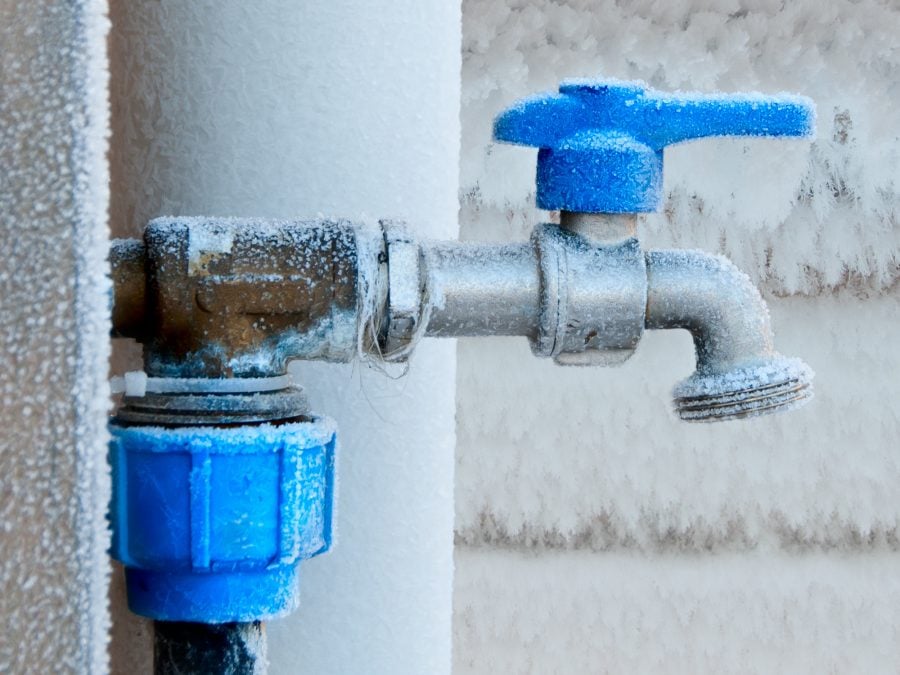Essential Tips to Prevent Frozen Plumbing in Winter: Expert Insights
Essential Tips to Prevent Frozen Plumbing in Winter: Expert Insights
Blog Article
Just how do you really feel about Prevent Frozen Pipes ?

Cold weather can ruin your pipes, particularly by freezing pipelines. Right here's exactly how to avoid it from happening and what to do if it does.
Introduction
As temperatures decline, the danger of icy pipes rises, possibly bring about expensive fixings and water damage. Comprehending exactly how to stop icy pipes is essential for house owners in cool environments.
Understanding Icy Pipes
What causes pipes to ice up?
Pipes freeze when subjected to temperatures listed below 32 ° F (0 ° C) for prolonged periods. As water inside the pipes ices up, it increases, putting pressure on the pipeline walls and possibly causing them to break.
Dangers and problems
Icy pipes can lead to supply of water disruptions, building damages, and expensive repair work. Burst pipelines can flood homes and trigger comprehensive architectural damages.
Indications of Frozen Piping
Recognizing icy pipelines early can prevent them from bursting.
How to determine icy pipes
Seek decreased water flow from faucets, uncommon smells or noises from pipes, and visible frost on revealed pipes.
Prevention Tips
Shielding at risk pipes
Cover pipelines in insulation sleeves or make use of warm tape to secure them from freezing temperature levels. Concentrate on pipes in unheated or exterior locations of the home.
Home heating methods
Maintain interior rooms effectively heated, specifically locations with pipes. Open cabinet doors to allow cozy air to flow around pipes under sinks.
Safeguarding Outdoor Plumbing
Yard hose pipes and exterior faucets
Detach and drain yard pipes before wintertime. Mount frost-proof faucets or cover outside taps with insulated caps.
What to Do If Your Pipes Freeze
Immediate actions to take
If you presume icy pipes, keep faucets available to eliminate stress as the ice thaws. Make use of a hairdryer or towels taken in warm water to thaw pipelines gradually.
Long-Term Solutions
Structural changes
Take into consideration rerouting pipes away from exterior walls or unheated areas. Add extra insulation to attics, basements, and crawl spaces.
Updating insulation
Invest in top quality insulation for pipes, attics, and wall surfaces. Correct insulation helps preserve constant temperatures and minimizes the threat of frozen pipes.
Verdict
Stopping frozen pipes calls for proactive procedures and fast feedbacks. By comprehending the causes, indicators, and preventive measures, home owners can safeguard their pipes throughout winter.
5 Ways to Prevent Frozen Pipes
Drain Outdoor Faucets and Disconnect Hoses
First, close the shut-off valve that controls the flow of water in the pipe to your outdoor faucet. Then, head outside to disconnect and drain your hose and open the outdoor faucet to allow the water to completely drain out of the line. Turn off the faucet when done. Finally, head back to the shut-off valve and drain the remaining water inside the pipe into a bucket or container. Additionally, if you have a home irrigation system, you should consider hiring an expert to clear the system of water each year.
Insulate Pipes
One of the best and most cost-effective methods for preventing frozen water pipes is to wrap your pipes with insulation. This is especially important for areas in your home that aren’t exposed to heat, such as an attic. We suggest using foam sleeves, which can typically be found at your local hardware store.
Keep Heat Running at 65
Your pipes are located inside your walls, and the temperature there is much colder than the rest of the house. To prevent your pipes from freezing, The Insurance Information Institute suggests that you keep your home heated to at least 65 degrees, even when traveling. You may want to invest in smart devices that can keep an eye on the temperature in your home while you’re away.
Leave Water Dripping
Moving water — even a small trickle — can prevent ice from forming inside your pipes. When freezing temps are imminent, start a drip of water from all faucets that serve exposed pipes. Leaving a few faucets running will also help relieve pressure inside the pipes and help prevent a rupture if the water inside freezes.
Open Cupboard Doors
Warm your kitchen and bathroom pipes by opening cupboards and vanities. You should also leave your interior doors ajar to help warm air circulate evenly throughout your home.
:strip_icc()/snow-outdoor-faucet-pipes-4af65d1e5e904fb1aa7bf74071fe5d89.jpg)
I hope you enjoyed reading our section about Winter Plumbing Precautions: Preventing Frozen Pipes. Thank you so much for taking a few minutes to browse our piece of content. Be sure to take the opportunity to promote this content if you enjoyed it. We recognize the value of reading our article about Winter Plumbing Precautions: Preventing Frozen Pipes.
Detail Report this page